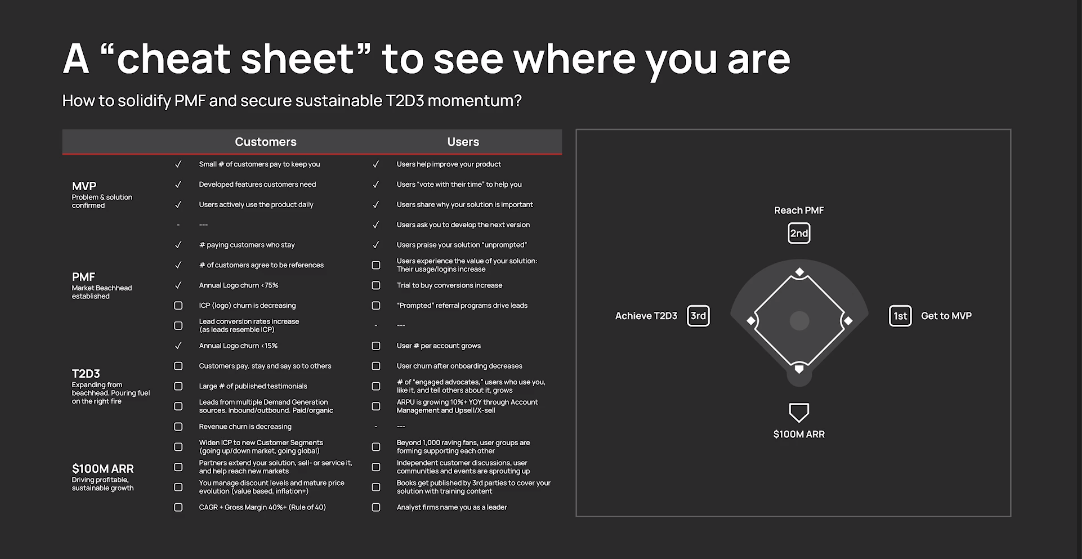Make or break. Boom or bust. Feast or famine. Sink or swim. Scale or fail.
There are many ways to describe the phase your startup is now entering that all convey the same sentiment. While not easy, the journey thus far may have been relatively comfortable. You’ve encountered a friendly audience of people who “get it” and want you to succeed. The number of customers serviced has been so small that it’s been easy to impress them with your personal engagement, and they sometimes have not even had to pay for the privilege of using your solution. Your journey and marketing plan are about to get much harder though.
Getting your SaaS to Product-Market Fit
After you get a Minimum Viable Product (MVP), the next step is to get to sustainable “Product Market Fit” (PMF). You need customers to pay and stay, coming from a reliable source of leads that convert into those paying customers.
The primary focus for your marketing efforts is to build at least one predictable, sustainable demand generation channel that you can count on. By “count on” I mean you can pour a certain amount of money or effort into it, and it will produce predictable returns. For instance, a $10,000 investment will yield 5 customers. This channel can be a sponsorship, pay-per-click campaign, website content or B2b SaaS content strategy that drives organic traffic, a trade show you optimize for, or a referral channel.
Your first investments likely include:
- A Sales and Marketing team
- Leveling up your technology infrastructure to support them
- Content marketing, solidifying your online presence with great messaging and consistent brand visuals. Your company now needs to look bigger than you are, and more credible to harder to please clients.
- You need some raving reviews from your first customers that allow you to impress more conservative prospects without having to do the talking yourself.
B2B SaaS Product-Market Fit Checklist
To understand the end goal, it’s important to know when you’ve reached PMF. You’ve reached PMF when your customers understand and use your product enough to recognize its value and begin to share their positive experiences with others.
If you can measure it, NPS scores from referral customers, and getting a significant portion of new (profitable) business from referrals is a great indicator. If these referrals are driven mostly by a specific group of customers, you can use that to focus your ICP.
The 10 milestones of PMF (Product Market Fit) cheat sheet
Use this PMF cheat sheet to accelerate your growth and get to scaling your marketing and sales faster. Check out this clip and more on the T2D3 YouTube.
If you don’t have great data yet, here’s a set of 10 milestones to determine your progress to reach PMF. Going through these in successive order is a good way to get to the Product-Market Fit finish line:
- 10 unique visitors. Organic, Direct, or from Referral Traffic
- 10 non-branded keywords with > 10 monthly searches ranked in the top 10 results
- 10 subscribers (not family and friends) who have given you their email
- 10 hand-raisers who ask for a demo or a conversation about their needs
- 10 users who have voted with their time and used your product at least once
- 10 repeat users who came back to use your service at least one more time
- 10 people who have shared your service with someone else (unaided)
- 10 customers (or users) who are now paying for your service
- 10 testimonials from paying customers who are willing to say so publicly
- 10 new paying customers from referrals by one of your existing customers
Once you have passed the tenth milestone on the above list, you can say with confidence you’ve reached Product-Market Fit.
Congratulations!
P.S. if you would like to learn about a more detailed framework to understand your progress on the MVP, PMF, and T2D3 Journey, consider taking the T2D3 Masterclass, where you'll get access to for example the below:
